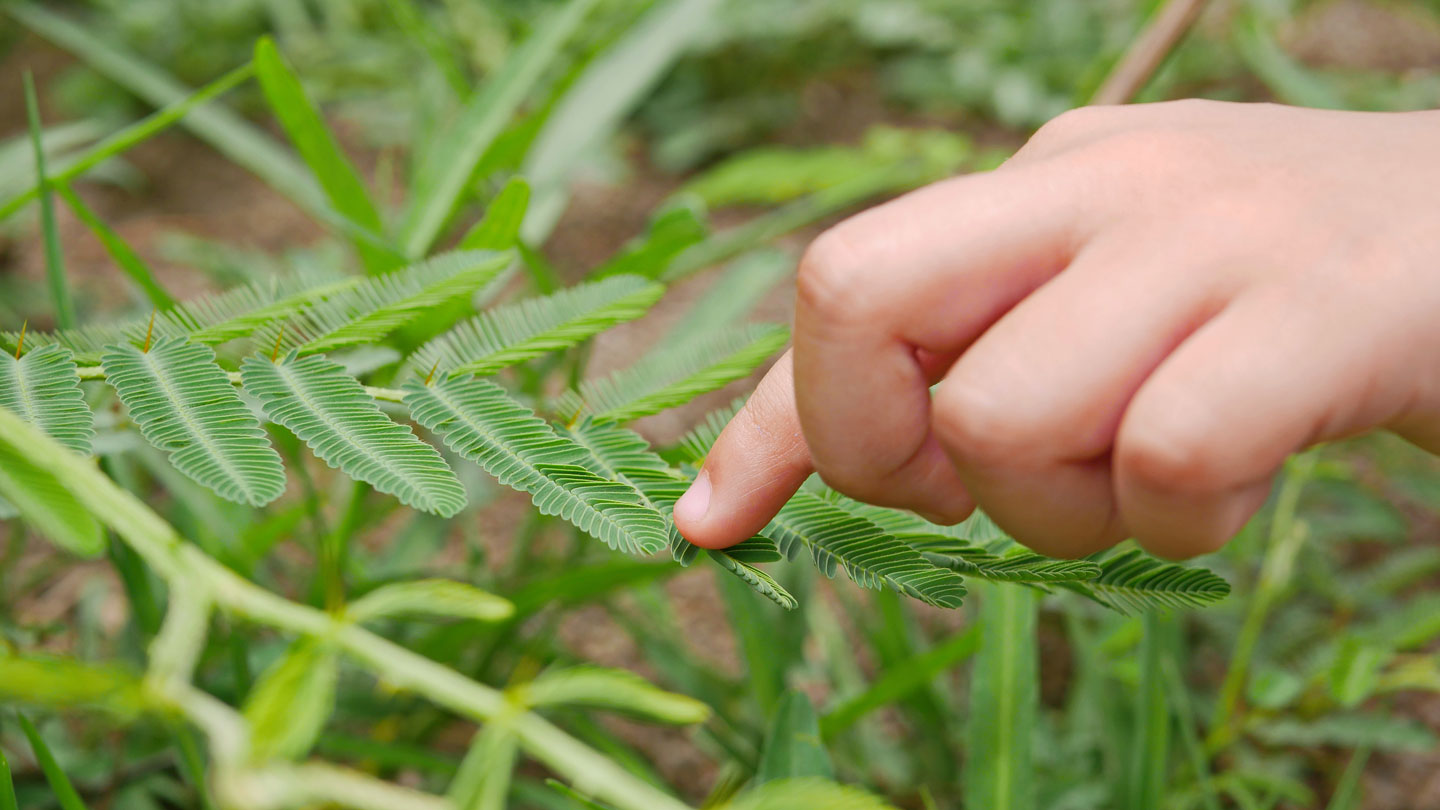
How plant ‘muscles’ fold up a mimosa leaf fast
A plant’s version of muscles does the lifting and pushing that shuts a Mimosa pudica plant leaf like a book when touched, perhaps as defense against danger. Now scientists are looking at how structural details of the musclelike cells enhance the plant's folding abilities.
Call them plant motors. Or plant muscles. Tiny bulges of specialized cells in a mimosa plant can fold its feathery leaflets together in seconds, then relax — and do it again.
A new look at these bulges on the Mimosa pudica plant has revealed more details of how a leaf manages its unusually fast folding, says biomechanist David Sleboda of the University of California, Irvine. “I think that these particular organs are really cool because their motion is reversible,” he says. “[W]hen people see plant motion that is reversible, it feels much more similar to animal motion.”
Scientists have already worked out the basic chemistry that drives a little mimosa motor, or pulvinus, he and colleagues write in a paper slated for the Feb. 6 Current Biology. When a deer hoof or something else scary jostles a leaf, potassium and some other ions shift from one part of a pulvinus toward another. Water follows the swoosh of ions. Cells that lose water deflate and sag while those on the other side bloat. Distortions in multiple pulvini make the halves of a feathery leaf fold toward each other, like an invisible hand gently closing a book.
























